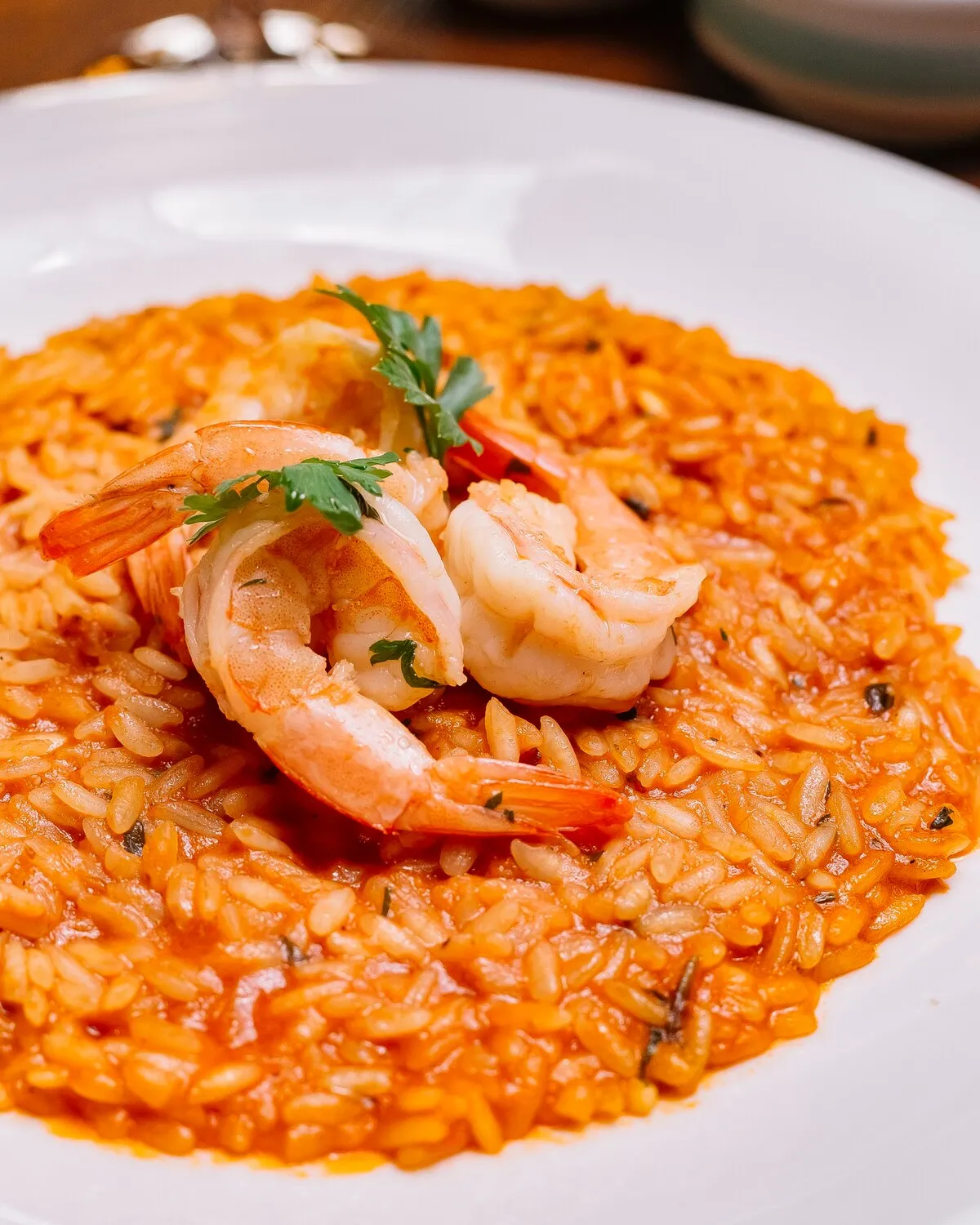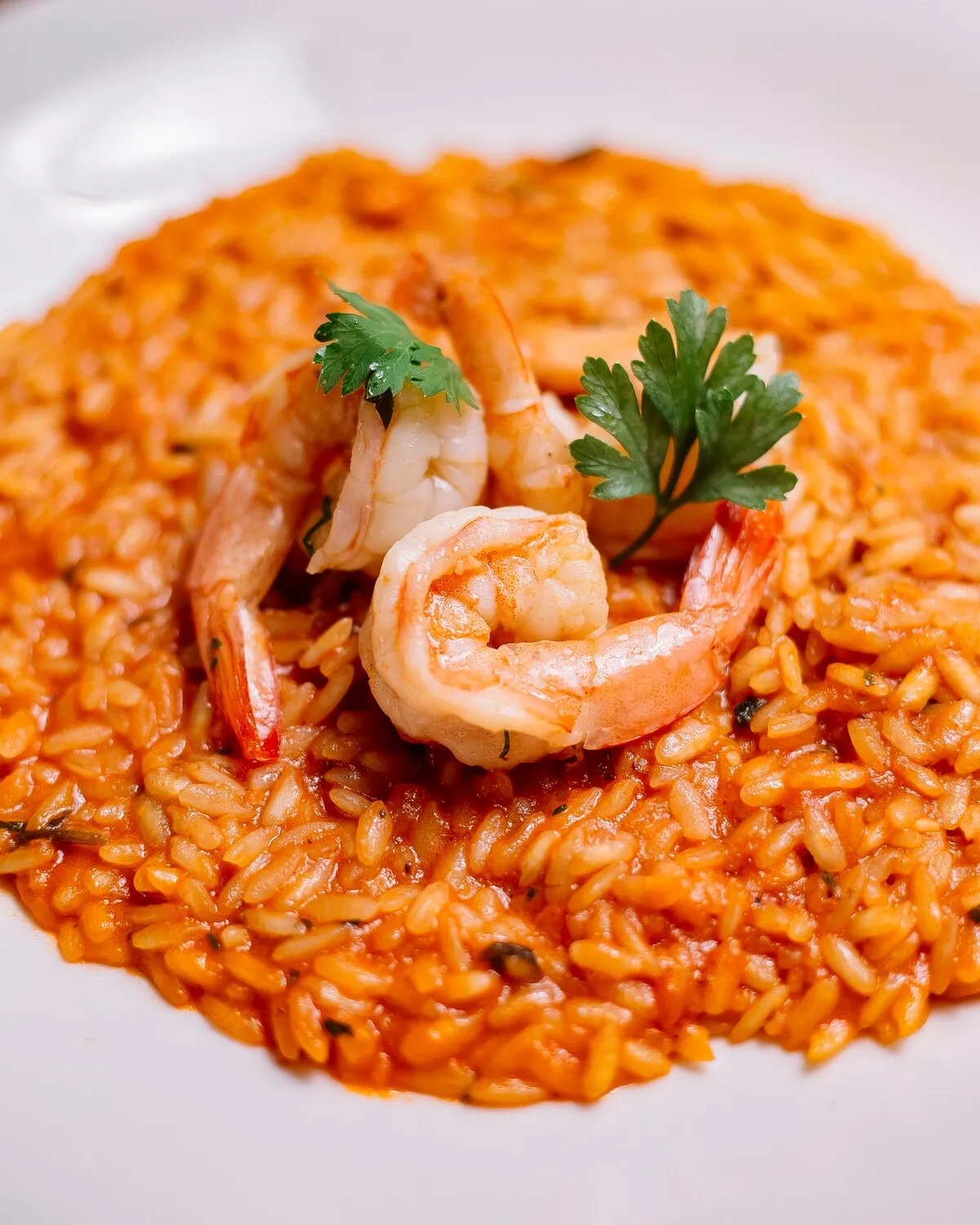
Risoto Milanês
Creamy risotto, typical of Milanese cuisine. It typically includes saffron, giving it a distinctive yellow color and rich flavor.
Nutrition Facts
* The % Daily Value (DV) tells you how much a nutrient in a serving of food contributes to a daily diet. 2,000 calories a day is used for general nutrition advice.
Ernesto's
Risotto alla Milanese's origins are somewhat shrouded in legend, but the most popular story places its creation in the late 16th century during the construction of the Duomo di Milano. A young glassblower's apprentice, known for using saffron to add color to the stained glass, playfully added it to a wedding feast's rice dish, creating the signature golden hue. While the exact truth remains debated, the dish quickly gained popularity amongst the Milanese aristocracy and eventually became a symbol of the city's culinary heritage.
Risotto alla Milanese is deeply embedded in Milanese culture and is often considered a symbol of the city's culinary identity. It is a dish that is frequently served at special occasions, family gatherings, and in traditional Milanese restaurants.
Saffron as a Symbol of Wealth
Historically, saffron was a very expensive spice, making Risotto alla Milanese a dish associated with wealth and status. The golden color was often seen as a reflection of the city's prosperity.
Traditional Pairing
Risotto alla Milanese is traditionally served as a 'primo' (first course) and is sometimes accompanied by Ossobuco (braised veal shanks), another Milanese specialty. The saffron risotto provides a perfect complement to the rich, meaty flavors of the Ossobuco.
Regional Variations
While the core ingredients of saffron, rice, and Parmesan remain consistent, variations exist across the Lombardy region. Some recipes incorporate bone marrow for added richness, while others may use different types of cheese or broths.
Risotto alla Milanese is characterized by its creamy texture and rich, savory flavor profile, dominated by saffron and Parmesan cheese. The slow cooking process allows the flavors to meld and deepen, creating a truly comforting and luxurious experience.
The primary flavor component is saffron, which imparts a unique floral aroma, subtle bitterness, and distinctive yellow color. Parmesan cheese adds a salty, umami-rich depth. Butter and bone marrow (optional, but traditional) contribute richness and a velvety texture. The broth, typically beef broth, provides a savory base. Onion and white wine offer aromatic complexity.
Rice Selection
Use a short-grain, high-starch rice variety like Arborio, Carnaroli, or Vialone Nano. These varieties absorb liquid well and release starch, creating the creamy texture characteristic of risotto. Carnaroli is often considered the best choice for its superior starch release and texture.
Broth Temperature
Keep the broth hot throughout the cooking process. Adding cold broth will lower the temperature of the rice and prevent it from cooking evenly and releasing its starch properly.
Stirring Technique
Stir the risotto frequently but not constantly. Stirring helps to release the starch from the rice, but over-stirring can make the risotto gluey. A gentle, consistent stirring motion is ideal.
Saffron Infusion
Infuse the saffron threads in a small amount of hot broth or water before adding them to the risotto. This helps to extract the maximum flavor and color from the saffron.
Manteca (Finishing Touches)
The 'manteca' is the final step, where you stir in butter and Parmesan cheese to create a creamy, glossy finish. Ensure the risotto is cooked 'all'onda' (wavy) at this stage, meaning it should have a slightly loose consistency that ripples like waves when the pan is tilted.
Explore additional Risotto dishes and restaurants
Explore RisottoDiscover top dining spots and culinary experiences in Cascavel.
Explore CascavelLearn more about the food culture, restaurant scene, and culinary heritage of Brazil.
Explore Brazil
